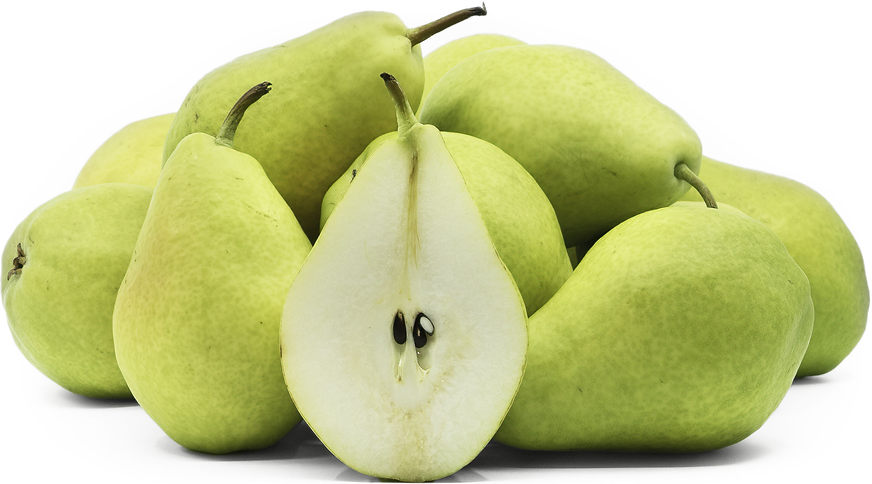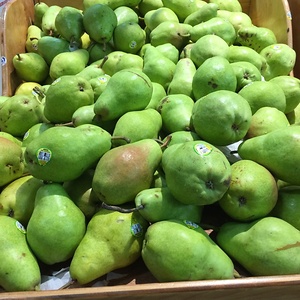


Tosca Pears
Estimated Inventory, 40 lbs : 0
Description/Taste
Tosca pears are medium to large in size and are shaped like a bell with a large bulbous bottom curving into a smaller, rounded top with a thin, dark brown-green stem. The smooth skin is firm, bright green, and covered in prominent lenticels with the occasional red blush. As the pear ripens, the skin will transform from green to yellow. The flesh is dense, creamy, and smooth with pale yellow to white hues. When ripe, Tosca pears are juicy and crisp with a sweet flavor.
Seasons/Availability
Tosca pears are available for a short time in the late summer through early fall.
Current Facts
Tosca pears, botanically classified as Pyrus communis, are a European variety and are members of the Rosaceae family along with apricots and apples. Tosca pears were developed from a cross between the early season coscia and the williams bon cretien, better known as the bartlett pear, and were first cultivated in Tuscany. This variety is extensively grown in Italy and is known for its sweet flavor and crisp texture, similar to the bartlett pear, and is favored for fresh eating.
Nutritional Value
Tosca pears contain vitamin C and vitamin K, calcium, dietary fiber, and some potassium.
Applications
Tosca pears are best suited for both raw and cooked applications such as baking and poaching. They can be used as a substitute for bartlett pears because of their similar taste and texture and can be used fresh in green salads, pasta salads, in sandwiches, sliced onto cheese boards, or layered as a garnish on soups and main dishes. Their firm flesh also holds up well to poaching and baking. They can be poached in wine with vanilla or other spices such as cinnamon and then added to yogurt or granola. They can also be simmered into chutneys, syrups, preserves, and used in baked goods such as pies, tarts, and cakes, and served over ice cream. Tosca pears compliment gorgonzola cheese, nuts such as walnuts, hazelnuts, almonds, pine nuts, and pumpkin seeds, garlic, onions, shallots, grapes, pomegranate seeds, strawberry, apple, spinach, meats such as pork, chicken, and lamb, oysters, herbs such as oregano, rosemary, parsley, mint, and cilantro, honey, maple syrup, and spices such as cinnamon, allspice, and cloves. They will keep up to two weeks when stored in the refrigerator and a couple of days at room temperature.
Ethnic/Cultural Info
Following an old breeder’s tradition, Tosca pears are named after the famous opera Tosca by Giacomo Puccini, and join the ranks of other new varieties named after operas including carmen, boheme, aida, norma, and turandot. Tosca is an Italian opera that is still one of the most frequently performed operas today.
Geography/History
Tosca pears are native to Tuscany, Italy, and have been grown for centuries as an early pear variety. Today Tosca pears can still be found growing in Italy and other regions of Europe, but they can also be found growing organically in eastern Washington in the United States and are available in limited quantities at farmers markets and specialty grocers.
Recipe Ideas
Recipes that include Tosca Pears. One
Podcasts











